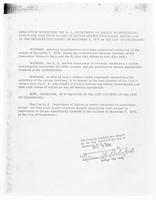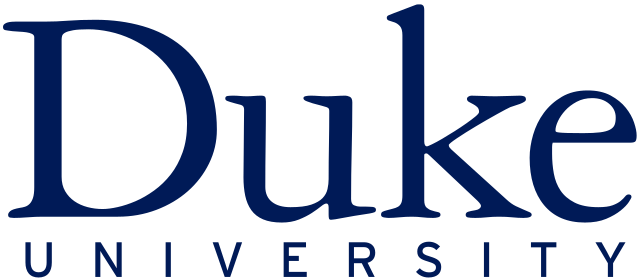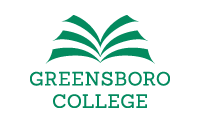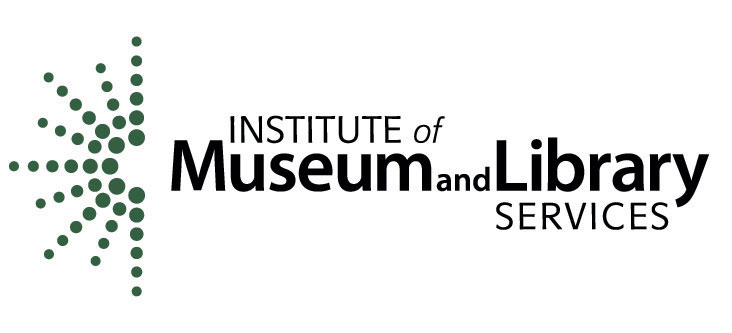Edward F. Burrows Papers (Civil Rights Greensboro Highlights)
Pages
-

-
Panel mulls doubts from Nov. 3 events
-
This October 28, 1981 article by Larry King of the Greensboro Daily News reports on a panel discussion sponsored by the American Friends Service Committee, Greensboro Citizens for Justice and Unity, and the Greensboro chapter of the N.C. Civil Liberties Union. The discussion centered on the federal investigation into the murder of five Communist Workers Party members at the Death to the Klan march in Greensboro on November 3, 1979, and on the role of law enforcement officers and informants. Former U.S. Attorney H.M. Michaux, who had recommended indictments against several Klansmen and Nazis before leaving office, was one of the panelists.
-

-
Partial list of endorsers for the Greensboro civil rights suit
-
This list names those supporting the civil law suit, Waller vs. Butokovich, stemming from the murder of five protestors at the Death to the Klan rally held in Greensboro on November 3, 1979. The list includes a wide range of supporters from local school teachers to national civil rights organizations.
-

-
Pictures of 5 slain shown before killings
-
This July 8, 1982, article by Alex Charns of The [Burlington] Times-News reports that Daisy Crawford, a union organizer at Cannon Mills, was interviewed by the FBI about her knowledge of five leaders in the Communist Workers Party (CWP) a week before the 1979 Greensboro Massacre. According to Crawford, this interview refutes FBI claims that they were not investigating the CWP prior to the massacre. She also claims that the encounter frightened her to the point where she declined to attend the November 3 rally where the massacre occurred.
-

-
Police Could Have Prevented Rally Shooting, Informant Says
-
This April 23, 1982, article by Mark Wright of The [Winston-Salem] Sentinel reports on comments by Greensboro police informant Edward Dawson prior to his testimony before a federal grand jury investigating possible civil rights violations related to the 1979 Greensboro Massacre. Dawson stated that the Greensboro place were well aware of many details surrounding the incident and could have prevented it. Dawson denied that he was working with the FBI and also said that he did not realize how serious the violence would be.
-

-
Press release
-
This December 1, 1981, press release from Concerned Citizens of the November 3rd Incident outlines the action plan adopted at the group's November 24 meeting, including a press conference, media appearances, coordination with local churches, a request that the Greensboro City Council and Human Relations Commission endorse the group's call, a petition drive, a visit to Representative John Conyers of the House Subcommittee on Criminal Justice, and community outreach.
-

-
Probe to Be Thorough, Attorneys Tell Group
-
This March 24, 1982, article by Gary Terpening of the Winston-Salem Journal reports on assertions by government prosecutors that their probe into the murders of five Communist Workers Party members at the Death to the Klan march in Greensboro, North Carolina, on November 3, 1979, will be thorough and will not ignore possible involvement by federal law enforcement agents. Citizens' groups had accused the federal prosecutors of conflict of interest in the case.
-

-
Professor to testify about civil rights
-
This October 26, 1981 article by Martha Woodall of The Greensboro Record reports that Duke University Law Professor William Van Alstyne would be testifying before a congressional subcommittee about his research on civil rights and its relation to the murder of five Communist Workers Party members at the Death to the Klan march in Greensboro, North Carolina, on November 3, 1979. Van Alstyne was scheduled to testify before the House Subcommittee on Criminal Justice, chaired by Representative John Conyers, as part of an investigation into possible federal charges against Klansmen and Nazis who participated in the events of November 3. Alstyne planned to focus on civil rights issues rather than on the specific guilt or innocence of participants.
-

-
Resolution by Greensboro City Council
-
This official resolution of the Greensboro City Council requests the U.S. Department of Justice to investigate and take appropriate actions regarding the murder of five Communist Workers Party members at the Death to the Klan march, in Greensboro, North Carolina, on November 3, 1979. This is a photocopy of the original document.
-

-
Resolution of the Greensboro Human Relations Commission
-
This official resolution of the Greensboro Human Relations Commission requests the U.S. Department of Justice to investigate the involvement of the defendants who were acquitted in state court proceedings along with any others who may have been involved in the murders of five Communist Workers Party members at the Death to the Klan march, in Greensboro, North Carolina, on November 3, 1979. This is a photocopy of the original document.
-

-
Resolution on Greensboro adopted by the United Presbyterian Church
-
This resolution adopted by the governing board of the United Presbyterian Church in the United States of America expresses concern for the victims of the violence at the Death to the Klan march in Greensboro, North Carolina, on November 3, 1979, at which five Communist Workers Party members were murdered. The resolution reaffirms the right of citizens to peacefully assemble and demonstrate, and raises questions about the activities of law enforcement at the time of the killings. Ultimately the resolution urges the Secretary of the Treasury and the Civil Rights Division of the U.S. Department of Justice to disclose the process of the federal investigation.
-

-
Resolution regarding the federal investigation into the Greensboro Massacre
-
This resolution adopted by the governing board of the National Council of the Churches of Christ expresses concern for the victims of the violence at the Death to the Klan march, on November 3, 1979, at which five members of the Communist Workers Party were murdered. The resolution raises questions about the activities of law enforcement at the time of the killings and urges the Secretary of the treasury and the Civil Rights Division of the U.S. Department of Justice to disclose the process of the federal investigation.
-

-
Response to Justice Department "denial" of ppecial prosecutor in Nov. 3rd case
-
This press release was issued by the Greensboro Justice Fund on October 7, 1982. It announces the U.S. Justice Department's denial of a request for a special prosecutor in the federal grand jury investigation of the murder of five Communist Workers Party members at the Death to the Klan march in Greensboro, North Carolina, on November 3, 1979. The press release comments on the request and it's denial and contrasts it to the facts and laws governing in this case. Ultimately the press release argues that the Justice Department is operating within a legal conflict of interest and accuses the Justice Department of participating in a cover up of the truth.
-

-
Say NO to Klan/Nazi Government Crimes: Demand Federal Charges
-
This flyer presents the complicated evidence and time line of court cases related to the murder of five Communist Workers Party members at the Death to the Klan march in Greensboro, North Carolina, on November 3, 1979. Six Ku Klux Klan members or affiliates who were allegedly involved with the murders were tried and acquitted in 1981. The flyer champions support for a federal grand jury to investigate the original trial as a violation of civil rights. The flyer outlines what happened at the original march, information about the five individuals who were killed, the involvement of local police and federal agents, and a related trial held in Asheville, North Carolina, in 1981. The flyer was sponsored by several organizations including People United, The North Carolina Chapter of the National Lawyers Guild, and Those United to Fight Fascism.
-

-
Special Prosecutor Is Sought
-
This March 23, 1982, article by Gary Terpening of the Winston-Salem Journal reports on the Greensboro Justice Fund's call for a special prosecutor in the case of the murders of five Communist Workers Party members at the Death to the Klan march in Greensboro, North Carolina, on November 3, 1979. The group contended the the U.S. Attorney's office and the Justice Department had a conflict of interest that should have precluded them from conducting the investigation and trial.
-

-
Statement of William Preston, member of 3rd fact finding delegation on the November 3rd incident
-
This statement by Bill Preston, president of the Fund for Open Information and Accountability (FOIA), reflects on the significance of the murders of five Communist Workers Party members at the Death to the Klan march, in Greensboro, North Carolina, on November 3, 1979. Preston places the event in historical context and identifies the FOIA's interest in pressing for government investigation and accountability in the incident.
-

-
Statement of concerns draft
-
This undated statement of concerns by the Concerned Citizens of the November 3rd Incident includes background about the group and expresses its two main concerns: (1) to pursue federal prosecution on civil rights charges of the parties responsible for the murder of five Communist Workers Party members at the Death to the Klan march, on November 3, 1979, and (2) to seek federal investigation into perceived inactivity by the Justice Department regarding the incident.
-

-
Statement to the Congressional Black Caucus Braintrust on Criminal Justice
-
This is a June 19, 1982 statement from Concerned Citizens of the November 3rd Incident to the Congressional Black Caucus Braintrust on Criminal Justice, detailing the group's concerns over the investigation of the murders of five Communist Workers Party members at the Death to the Klan march, on November 3, 1979. The report mentions the possibility of local law enforcement involvement or negligence, stating that Edward Dawson, a police informant and Klan member, was aware of the Klan members' plans. The U.S. Bureau of Alcohol, Tobacco, and Firearms, and the Federal Bureau of Investigation are also named in the report, and the impartiality of the Justice Department attorney conducting the grand jury is also called into question. The report discusses a ""pattern"" and ""continuity"" of racial tensions in Greensboro, citing William Chafe's book Civilities and Civil Rights and several recent community issues. The final page consists of a list of supporting documents that were submitted with the report but are not included with this copy.
-

-
Study cites links between Greensboro police, Klan
-
This October 3, 1981 article by Mary Thornton of The Washington Post reports of the findings of a study by the Institute for Southern Studies that there was an alliance between law enforcement officers and the defendants in the murder case regarding the deaths of five Communist Workers Party members at the Death to the Klan march in Greensboro on November 3, 1979. The report is critical of weaknesses in the prosecution of defendants in the case, and of the Justice Department's approach, and further suggested that the Greensboro Police Department was negligent in allowing the incident to occur when they had been forewarned of the potential for violence. In the article, institute president Julian Bond strongly criticizes the Reagan administration and accuses it of "complicity" in fostering racial conflict.
-

-
Tasks and assignments stemming from the October 28th meeting at Trevi Fountain
-
This is a list of tasks and assignments for members of Concerned Citizens of the November 3rd Incident stemming from the group's October 28 meeting. Tasks include communications surrounding Justin Bond's visit on November 22, contacting organizations to encourage their support of hearings held by Representative John Conyers and the House Subcommittee on Criminal Justice, and administrative activities related to past and future meetings.
-

-
The Greensboro Justice Fund
-
This paper provides and administrative history of the Greensboro Justice Fund which was created to facilitate the litigation and public education relating to the murder of five Communist Workers Party members at the Death to the Klan march in Greensboro, North Carolina, on November 3, 1979. The document identifies the organization's board of directors, the legal cases and participating attorneys, funding strategies, and types of community involvement. This undated document was most likely written during 1982 during the federal grand jury investigation.
Pages









